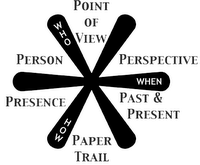The Disney-Marvel Mania, and Why We Should All Calm Down
 The comics websites went wild today with news that Disney is buying Marvel for $4 billion. (Or, as the British-based Bleeding Cool News put it, $4,000,000,000--pronounced “four thousand million" or "four billion," take your pick.)
The comics websites went wild today with news that Disney is buying Marvel for $4 billion. (Or, as the British-based Bleeding Cool News put it, $4,000,000,000--pronounced “four thousand million" or "four billion," take your pick.)
A great deal of the internet chatter consisted of:
And it was remarkable how few people talking about the corporate merger showed any knowledge of how corporations work.
The last point was best addressed by artist Skottie Young, now drawing Marvel's adaptation of The Marvelous Land of Oz, as he wrote on Twitter: A lot of peolple asking me about "creative freedom" now under Disney.
'Nuff said.
They didn't buy a indy black and white publishers, guys.
It's Marvel.
As for the second point, it's true that Disney has (or had, as of a few years ago) a vice president in charge of synergy. The corporation's online strategy brings many disparate divisions under one web domain: go.com. And of course Disney likes to get the most profit out of its holdings--like any other corporation. But that also means not trying to change how profitable divisions, such as Pixar, run themselves.
As for Marvel's deals with other media conglomerates, and Disney's with other comics publishers, those deals are governed by contracts. Unless we can read those contracts, we don't know anything about them.
Multinational multimedia corporations make deals with rivals all the time. For instance, Disney's television department produced Scrubs, but for the first several seasons it was on NBC, owned by GE. After NBC chose not to renew that contract, Disney's ABC network (which had originally declined the show) scheduled more episodes because it still saw profits to be made.
The jokes, as lame as they quickly became, show the real basis of this deal. They reflect the power of the Disney and Marvel brands, so familiar and so emotionally affecting that (like celebrities) they bend ordinary rational behavior.
When we hear the name "Disney," we think of certain icons (Mickey Mouse, Sleeping Beauty's castle) and a certain style of family entertainment. But the Disney corporation moved beyond that brand long ago. It includes ABC and its affiliated networks. It includes the Weinsteinless Miramax, Touchstone Pictures, and Hollywood Pictures for movies that don't fit the "Disney" label. It includes ESPN. It includes (as a small part of one subdivision) the publisher Hyperion.
Similarly, when we hear "Marvel," people familiar with American comic books quickly envision its major brands: Spider-Man, the Hulk, Captain America. Most of those icons were created by Stan Lee, Jack Kirby, Steve Ditko, and other employees during a vigorous run in the 1960s. The most recent character with that level of popularity is Wolverine, created in 1974 and developed over the next few years.
And yet those brands are so powerful that Disney values the company at $4,000,000,000.




























